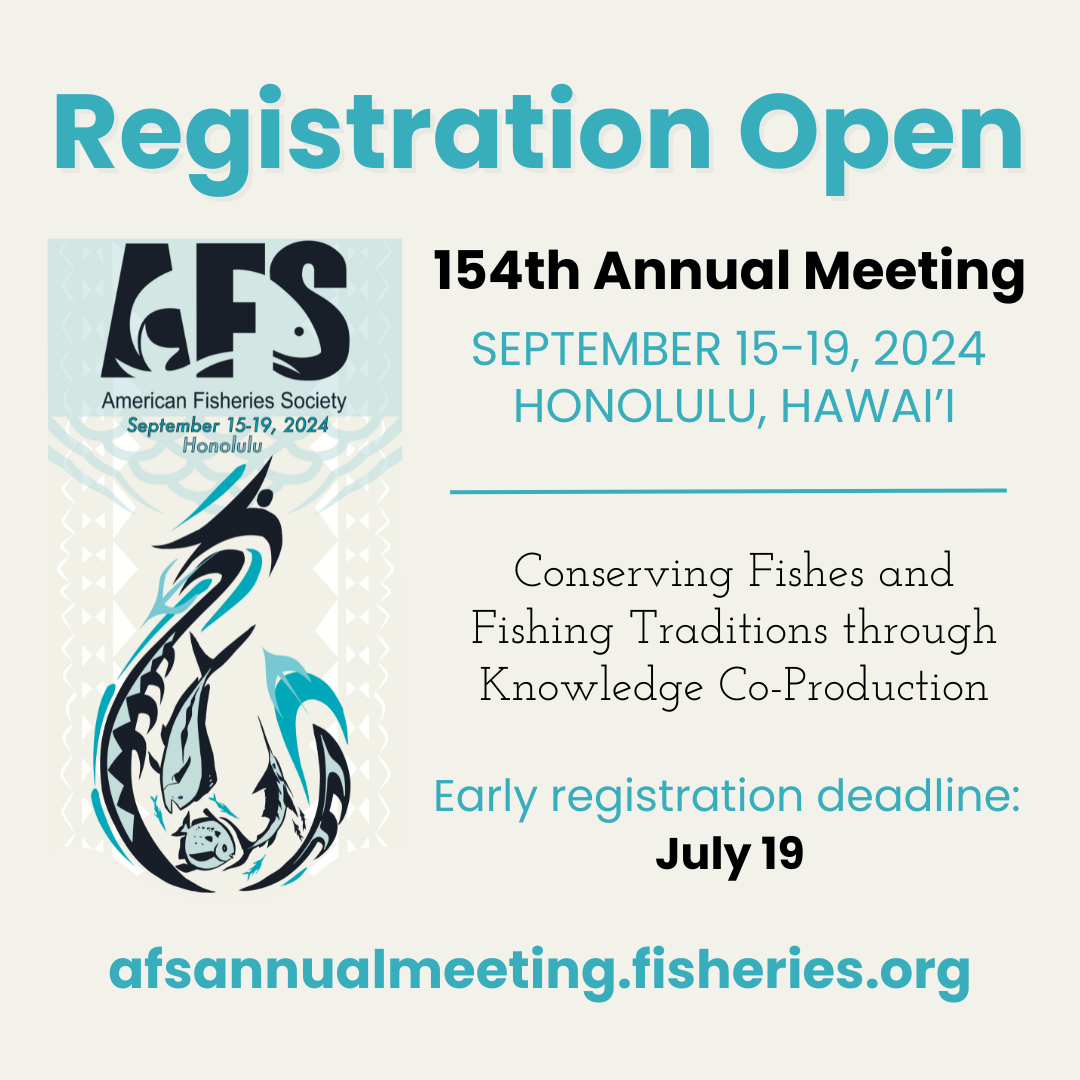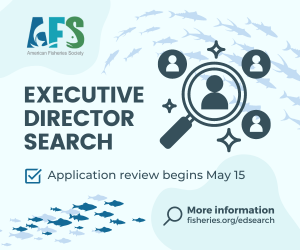J. Hal Michael, Jr., Science Outreach Director, Sustainable Fisheries Foundation, 511 Flora Vista Road NE, Olympia, WA 98506. E-mail: [email protected]
The mindset permeating salmonid management in Washington, and probably most other fisheries managed worldwide, can be encapsulated in the last draft of a steelhead Oncorhynchus mykiss management plan that was developed by the state of Washington and treaty Indian tribes 26 years ago (Washington Department of Fish and Wildlife [WDFW], unpublished data):
A purpose of fisheries management is to ensure achievement of a desired level of catch. In order to maintain this level, it is necessary to prevent the capture of a certain portion of the run, so that these uncaught fish can spawn and produce fish for future use. An escapement allowance must be evaluated primarily according to whether itachieves the catch objective.
Note that fish serve two purposes: catch and production of catch. No other values or benefits are recognized.
The first 34 years of my career were with Washington’s primary fish management agencies: the departments of Game, Fisheries, and Fish and Wildlife. My work areas included research, salmon management, environmental management of hatcheries, and salmonid recovery. When I began, the above-quoted “escapement” was the prevailing mindset. To most of us, the ecosystem that produced salmonids was, in and of itself, the source of all the fish needed. Salmonids were an independent result of the ecosystem; they were a product of the system, not an integral part of it. Over my career, the concept that the fish were a keystone component of the ecosystem evolved, beginning with observed changes in growth rates of juvenile salmonids gorging on Chum Salmon O. keta carcasses, advancing when I examined the impact that spawning Pink Salmon O. gorbuscha had on Coho Salmon O. kisutch recruits per spawner (Michael 1995, 1998), and then really crystallizing when I shared those ideas with people outside the WDFW.
In the Pacific Northwest, published and ongoing studies have demonstrated the benefits of spawning salmon and their carcasses to a wide variety of resources beyond salmon populations and quantified general levels of salmon-delivered nutrient need. Species such as grizzly bear Ursus arctos, gray wolf Canis lupus, and killer whale Orcinus orca (Orca) are listed under the Endangered Species Act. Historical museum specimens of the grizzly bear in the Columbia River basin had, on average, 60% of the body content of nitrogen as being derived from marine sources (Hildebrand et al. 1999). Resident killer whales in the Northeast Pacific rely on salmon (Nichol and Shackleton 1996). In some areas, gray wolves shift their diet to salmon when they become available (Darimont and Reimchen 2002). Nonetheless, the needs of these predators for prey are excluded from salmon management programs. Further, the needs of salmon are excluded in regulating harvests of the salmon’s prey species. In other parts of the world, otherwise harvestable fish are reserved for other resources such as the consideration of predator consumption in models for harvesting Dee Estuary (Wales) cockles. Harvest rates are based on the stock needed to provide overwintering food source for oystercatchers (as a proxy for other wading birds; Stephanie Good, Marine Stewardship Council, personal communication).
As knowledge on the value of spawning salmon to the ecosystem accumulated, there was documentation where Pink Salmon and Chum Salmon showed significant increase in numbers and productivity concomitant with increases in their spawning numbers. For both species, the individual goals in Puget Sound were set in the late 1970s, based on average escapement observed in “base years,” which were basically the late 1950s to mid-1970s. Analysis of brood productivity in subsequent years showed that as escapement increased, the actual productivity also went up. Perhaps the most egregious example occurred in the Puyallup River system where the maximum sustainable yield goal for Pink Salmon was set at 19,500 and escapements in the early 21st century exceeded a million. To my knowledge, no escapement goals were officially increased, but there is a continued push to actually reduce some goals.
The placement of salmon carcasses, even those collected during remote egg collections, is prohibited by the Clean Water Act. Therefore, to implement a legal program, WDFW, in conjunction with state and federal water quality regulators, developed protocols and conducted environmental reviews that allowed controlled placement of carcasses and other products capable of fertilizing streams and implemented application/monitoring/reporting processes for Washington waters. Those protocols and processes were shared with other states and provinces as they began developing their own programs. In addition, WDFW used the observed benefit that spawning Pink Salmon provided to Coho Salmon to improve the accuracy of forecasts of Coho Salmon returning to that stream. Based partly on these evolving ideas and growing literature (Kline et al. 1990; Bilby et al. 1998; Cedarholm et al. 1999; Stockner 2003; Wipfli et al. 2003; Bartz and Naiman 2005), WDFW became the early leader in recognizing that the lack of spawning salmon reduced watershed productivity and began to aggressively develop programs to use carcasses of hatchery salmon to provide nutrients to the system.
However, WDFW leadership in this field waned even as scientific information accumulated regarding the benefits of increased production not only to instream resources but also to the rest of the watershed and as historical escapement levels and ecological contributions of marine-derived nutrients were identified and published (Montgomery et al. 1996; Bilby et al. 2001; Hassan et al. 2008; Naiman et al. 2009; Sanchez-Murillo et al. 2014). No reasons were ever communicated to me as to why directions were changing. This waning became clear to me when WDFW began developing and considered implementing ecosystem-based salmon spawning escapement goals without including its only staff member with peer reviewed publications on the topic on the task force. Even offers of access to the literature, an outline of then current knowledge of salmon in the ecosystem, and nonagency colleagues’ expertise were spurned.
Concurrently, my position was eliminated and I was moved to other work areas and the old tasks were spread among other staff. The agency’s hatchery carcass distribution program was removed from individually centralized control to control within each of six regions. A new series of protocols to define and manage carcass distribution was developed with no input or review from me.
A key way of excluding ecosystem concerns is via intentional siloing of staff and programs. In siloing, each employee and program component is kept separate so that cross-pollination is hindered. Rather than using a whole ecosystem approach, salmon managers manage fisheries (often just a single species), habitat managers deal with physical habitat structure and processes, and wildlife managers manage wildlife (again often just a single species). There is no or very little coordination across programs. By maintaining a silo management mentality, the needs of the ecosystem are conveniently and easily ignored. In one extreme case, a staffer in one part of WDFW had to draft and threaten to submit a public disclosure request to finally obtain fish data from another part of WDFW that were needed to perform his job. At other times, WDFW staff were directed to not speak on issues outside of their geographic area of responsibility. Senior management aggressively kept the silos intact despite paying lip service to the need to destroy the silos.
It is naïve to think that natural resource management decisions are based simply on what is best for that resource (whatever “best” is). There is a myriad of competing fish species, not to mention other animals, plants, and competing social priorities. This is further complicated by legal requirements such as treaties and human needs for the water, land, wood, and so forth.
As biologists, we have a responsibility to ensure that the whole scientific picture is presented to decision makers and to the public. If managers believe that it is better to focus fisheries on salmon instead of setting some fish aside for other species (whether Endangered Species Act listed or not), then it should be explained to staff and the public that less food has ecological consequences for those other species. There are always political trade-offs to be made, such as trading fish for drinking and irrigation water, installing hydroelectric dams for cheap electricity, putting in flood control dams to facilitate developing floodplains, encouraging more people to move into an area to stimulate economic growth, and so forth. However, there are ecological consequences to each that the public and decision makers must be made aware of, and it is the professional biologist’s responsibility to make them aware of the trade-offs. This can be difficult to accomplish because challenging an organization’s policies can, and does, have career implications. Perhaps this is why those who do challenge are among the older, more established staff.
Actions such as siloing create an opportunity for professional organizations like the American Fisheries Society to be actively involved in supporting opportunities for biologists to present scientifically defensible information at meetings and in publication of that information. Over the past 15 years of my career, publication and meeting attendance were often personally funded and occurred while on leave. Professional organizations should publicly and financially support members in making scientifically defensible presentations. At the same time, biologists need to ensure that their statements and positions are good science and not just a deeply held belief. Beyond support for technical arguments, the American Fisheries Society and other professional resource societies should jointly publish a journal for peer reviewed manuscripts dealing with actual management decisions that bring together science, law, treaties, and politics across fish, wildlife, water, timber, minerals, human populations, and whatever other resources are affected by the decision.
ACKNOWLEDGMENTS
I appreciate the comments, suggestions, and inspiration provided by Bob Hooton, Pamela Michael, Pat Michael, Gary Sprague, and Joan Trial in early iterations. I appreciate the critical comments and suggestions of Guest Editor Bob Hughes and four anonymous reviewers. Finally, Senior Science Editor Jeff Schaeffer offered many suggestions that put on the finishing touches.
REFERENCES
Bartz, K. K., and R. J. Naiman. 2005. Effects of salmon-borne nutrients on riparian soils and vegetation in Southwest Alaska. Ecosystems 8:529–545.
Bilby, R. E., B. R. Fransen, P. A. Bisson, and J. W. Walter. 1998. Response of juvenile Coho Salmon (Oncorhynchus kisutch) and steelhead (Oncorhynchus mykiss) to the addition of salmon carcasses to two streams in southwestern Washington, U.S.A. Canadian Journal of Fisheries and Aquatic Sciences 55:1909–1918.
Bilby, R. E., B. R. Fransen. J. K. Walter, C. J. Cederholm, and W. J. Scarlett. 2001. Preliminary evaluation of the use of nitrogen stable isotope ratios to establish escapement levels for Pacific salmon. Fisheries 26:6–14.
Cedarholm, C. J., M. D. Kunze, T. Murota, and A. Sibatani. 1999. Pacific salmon carcasses: essential contributions of nutrients and energy for aquatic and terrestrial ecosystems. Fisheries 24(10):6–15.
Darimont, C. T., and T. E. Reimchen. 2002. Intra-hair stable isotope implies seasonal shift to salmon in gray wolf diet. Canadian Journal of Zoology 80:1638–1642.
Hassan, M. A., A. S. Gottesfeld, D. R. Montgomery, J. F. Tunnicliffe, G. K. C. Clarke, G. Wynn, H. Jones-Cox, R. Poirier, E. MacIsaac, H. Herunter, and S. J. Macdonald. 2008. Salmon-driven bed load transport and bed morphology in mountain streams. Geophysical Research Letters [online serial] 35:L04405.
Hilderbrand, G. V., C. C. Schwartz, C. T. Robbins, M. E. Jacoby, T. A. Hanley, S. M. Arthur, and C. Servheen. 1999. The importance of meat, particularly salmon, to body size, population productivity, and conservation of North American brown bears. Canadian Journal of Zoology 77:132–138.
Kline, T. C., Jr., J. J. Goering, O. A. Mathisen, P. H. Poe, and P. L. Parker. 1990. Recycling of elements upstream by runs of Pacific salmon: I. δ15N and δ13C evidence in Sashin Creek, southeastern Alaska. Canadian Journal of Fisheries and Aquatic Sciences 47:136–144.
Michael, J. H., Jr. 1995. Enhancement effects of spawning Pink Salmon on stream rearing juvenile Coho Salmon: managing one resource to benefit another. Northwest Science 69:228–233.
Michael, J. H., Jr. 1998. Pacific salmon spawner escapement goals for the Skagit River watershed as determined by nutrient cycling considerations. Northwest Science 72:239–248.
Montgomery, D. R., J. M. Buffington, P. Peterson, D. Schuett-Hames, and T. P. Quinn. 1996. Streambed scour, egg burial depths and the influence of salmonids spawning on bed surface mobility and embryo survival. Canadian Journal of Fisheries and Aquatic Sciences 57:1061–1070.
Naiman, R. J., J. M. Helfield, K. K. Bartz, D. C. Drake, and J. M. Honea. 2009. Pacific salmon, marine-derived nutrients and the characteristics of aquatic and riparian ecosystems. Pages 395–425 in A. J. Haro, K. L. Smith, R. A. Rulifson, C. M. Moffitt, R. J. Klauda, M. J. Dadswell, R. A. Cunjak, J. E. Cooper, K. L. Beal, and T. S. Avery, editors. Challenges for diadromous fishes in a dynamic global environment. American Fisheries Society, Symposium 69, Bethesda, Maryland.
Nichol, L. M., and D. M. Shackleton. 1996. Seasonal movements and foraging behaviour of northern resident killer whales (Orcinus orca) in relation to inshore distribution of salmon (Oncorhynchus spp.) in British Columbia. Canadian Journal of Zoology 74:983–991.
Sanchez-Murillo, R., E. S. Brooks, L. Sampson, J. Boll, and F. Wilhelm. 2014. Ecohydrological analysis of steelhead (Oncorhynchus mykiss) habitat in an effluent dependent stream in the Pacific Northwest, USA. Ecohydrology 7:557–568.
Stockner, J. G., editor. 2003. Nutrients in salmonid ecosystems: sustaining production and biodiversity. American Fisheries Society, Symposium 34, Bethesda, Maryland.
Wipfli, M. S., J. P. Hudson, J. P. Caouette, and D. T. Chaloner. 2003. Marine subsidies in freshwater ecosystems: salmon carcasses increase growth rates of stream-resident salmonids. Transactions of the American Fisheries Society 132:371–381.
Members click below for the July 2017 Fisheries magazine’s complete issue. Non-members, join here.
This content is for members only. Please login.





